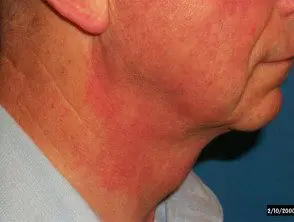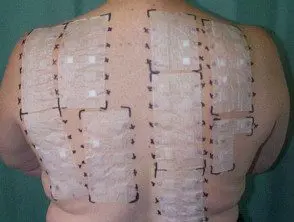What is cosmetic?
A cosmetic is defined as a product for topical application that is used to beautify, clean or protect the hair, skin, teeth or complexion.
In essence, a cosmetic should not contain any active ingredients that can affect the structure or function of the skin. The division of cosmetics and medicines is not always clear as there are many products available that have two intended uses, for example an anti-dandruff shampoo is a cosmetic because it is meant to cleanse the hair but it also contains a medicine to treat the scalp . and dandruff. Such products must meet the requirements for both cosmetics and medications.
Cosmetics can be broadly divided into the following groups.
- Facial makeup: eye makeup, lipstick, blush, foundation
- Nail care: varnish, remover, artificial. nail
- Skin care: cleanser, moisturizer, tonic
- Hair care: shampoos, hair color, dye, regeneration treatment.
- Oral care: toothpaste, mouthwash
- Body cleaners: soap, bath additives, shower. gel
-
Shaving: shaving foam /creamAfter shave
- Fragrances and perfumes.
- Deodorant: deodorant, antiperspirant
- Sun protection: sunscreen
Standard cosmetic authorities
Countries around the world have regulatory standards that ensure these products are safe for the workers who handle them, the environment and for the use of consumers.
- New Zealand: Standard of the Cosmetic Products Group. Environmental Protection Authority (EPA)
- Australia: NICNAS Cosmetic Guidelines. National System for the Notification and Evaluation of Industrial Chemicals (NICNAS)
- United States: Federal Food, Drug, and Cosmetic Act. FDA U.S. Food and Drug Administration
- Europe: Cosmetics Directive. European Commission Consumer Affairs
Who receives contact reactions to cosmetics?
It is estimated that, on average, women use at least seven types of cosmetics every day, and reactions to these products are quite common. Although the predominance cosmetic allergy In the general population it is unknown, several studies suggest that up to 10% in the population will have some type of reaction to a cosmetic throughout life. This number can be much higher since many mild reactions that occur at home are self-diagnosing and often self-treating.
What kinds of reactions can occur?
Cosmetics can produce a range of Adverse reactions.
Contact urticaria
- A local burning, tingling, itching sensation can occur within minutes to about 1 hour after skin contact.
- Swelling and redness (bump and flare) can be seen.
- the eruption It usually resolves on its own within 24 hours of start.
Anaphylaxis
-
Anaphylaxis causes difficulty breathing, nausea and vomiting, and acute hives and angioedema.
- It is rare but it can be fatal.
- There are reports of death of the allergen in permanent dye
Irritating Contact dermatitis
- Irritant contact dermatitis accounts for 80% in all cases of contact dermatitis.
- This can happen to anyone, but people with atopy they are more prone to irritating dermatitis than non-atopic dermatitis.
- Dermatitis usually starts as itchy patches, scaly red or skin rash, and may also present as oozing blisters.
- For strong irritants, a reaction can occur within minutes or hours of exposure.
- For weaker irritants, it may take days or weeks of continuous exposure before symptoms appear.
Allergic contact dermatitis
- Allergic contact dermatitis occurs when a person's immune system is sensitized to an allergen (the person is allergic to a specific ingredient).
- A rash generally develops more than 12 hours after contact with the allergen and peaks approximately 48 hours after exposure.
- Symptoms of allergic contact dermatitis include redness, swelling, severe itching, and Urticated erythema.
- The face, lips, eyes, ears, and neck are the most common sites for cosmetic allergies.
Photocontact dermatitis
- Photocontact dermatitis is caused by the interaction of sunlight with an ingredient in the cosmetic.
Some people may develop more than one type of reaction. For example, a atopic the individual may be prone to irritating contact dermatitis, which in turn increases their likelihood of allergic contact dermatitis, as their skin barrier function weakens and sensitizes the allergen.
It's possible for a cosmetic allergy to develop even after years of using a cosmetic without any prior problems.
Allergic contact dermatitis to cosmetics

Beeswax in moisturizer

Hair dye (PPD)

Aftershave fragrance
Which are the Allergens in cosmetics?
The range of cosmetics is wide, so the set of allergens is infinitely huge. The groups of allergens that seem to cause cosmetic allergy most often are fragrances, preservatives, and paraphenylenediamine (PPD) found in hair dyes.
Fragrances
- There are over 5,000 different fragrances used in cosmetics and skin care products.
- They are present in most types of cosmetics, including perfumes, shampoos, conditioners, moisturizers, facial cosmetics, and deodorants.
- Fragrances are the most common reason for cosmetic contact dermatitis.
- 70-80% fragrance allergy can be caught by patch tests with Fragrance Mix and Balsam of Peru
- Cosmetic labeled "unscented" does not mean unscented; Some unscented products may contain a fragrance to mask another chemical odor. Products must be labeled 'unscented' or 'unscented' to indicate that no fragrances have been used.
Preservatives
- Preservatives are the second most common cause of allergic contact dermatitis to cosmetics.
- Cosmetics that contain water contain preservatives to prevent bacterial or fungal growth.
- Some of the most commonly found preservatives in cosmetics include:
-
Parabens - used in many facial cosmetics and skin care products
-
Formaldehyde: Found mainly in shampoos
-
Imidazolidinylurea
-
Quaternium-15
-
Isothiazolinone and especially methylisothiazolinone.
-
Paraphenylenediamine in hair dye
-
Paraphenylenediamine (PPD) is the third most common ingredient after fragrances and preservatives to cause allergic contact dermatitis.
- It is widely used in permanent hair dyes because it results in a natural color.
- Reactions to PPD can be mild and involve dermatitis of the upper eyelids or the edges of the ears, or they can be more severe with swelling of the scalp, face, and more widely.
- New PPD derivatives have a lower risk of causing allergies.
Other allergens used in cosmetics that can cause allergies to cosmetics include:
-
Lanolin (wool alcohol)
- Coconut diethanolamide
- Glyceryl monothioglycolate
- Methyldibromo glutanitrile
- Rosin (rosin)
- Propolis
- Thiomersal
- Sun protection allergens
- Nail cosmetic allergens
How is cosmetic allergy diagnosed?
Cosmetic allergy is diagnosed by performing patch tests. A diagnosis can involve testing against some different chemicals due to the many potential allergens in cosmetics as well as the person's cosmetics applied as they are. See individual contact allergens for patch testing recommendations.
An open application test may also be recommended.
Patch tests that reveal multiple contact allergies to fragrances

Patch tests

Patch tests in cosmetic allergy

Patch tests in cosmetic allergy
What is the treatment for cosmetic allergy?
Contact dermatitis should go away quickly once the cosmetic allergen is removed. On the counter mild creams and ointments current steroids, such as hydrocortisone cream, can be used to help control itching, swelling and redness. A prescription steroid cream may be required for serious reactions, as well as an antibiotic for secondary bacteria. infection. Friendly emollients Like cetomacrogol cream it can be used to calm and relieve dryness.
Cosmetic allergy prevention.
The best way to prevent allergic contact dermatitis to cosmetics is to avoid all products that contain the allergen.
- Read the ingredient list on all cosmetic products to identify if they contain a relevant allergen.
- Try new cosmetics by placing a small sample of the product on the inner wrist or elbow and observing for 24 to 48 hours.
- Choose products with few ingredients to minimize potential allergens.
- Apply perfume to clothing instead of skin; Let the perfume dry before putting on your clothes.
- Look for products that are hypoallergenic, fragrance-free, andcomedogenic. However, be aware that they can still cause reactions.

